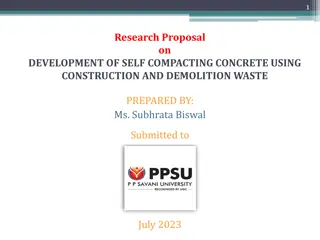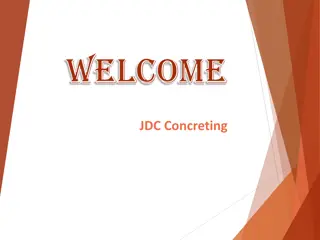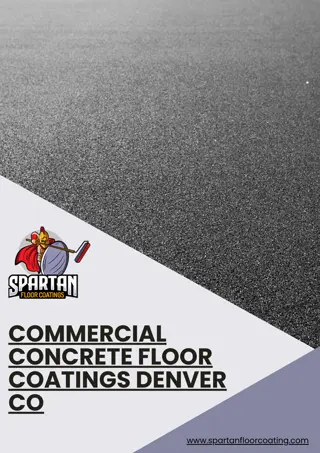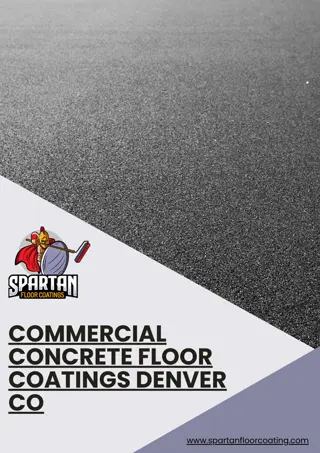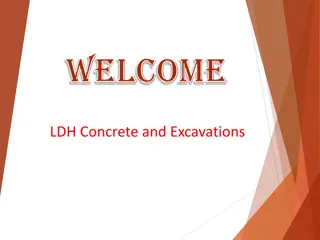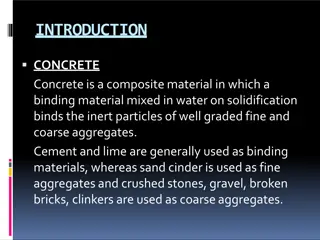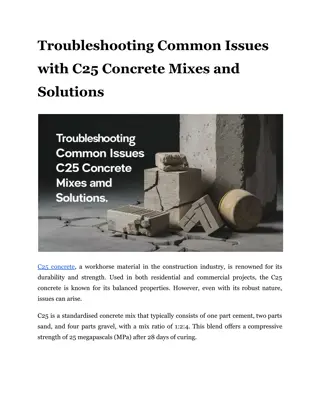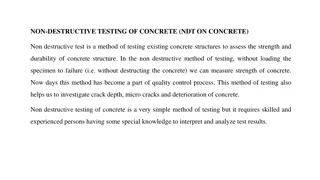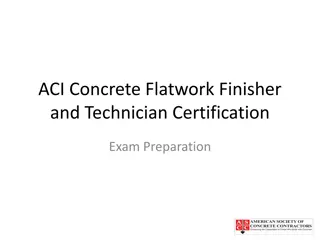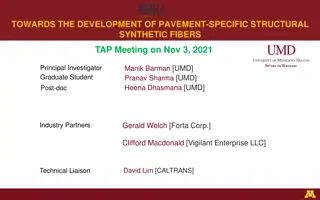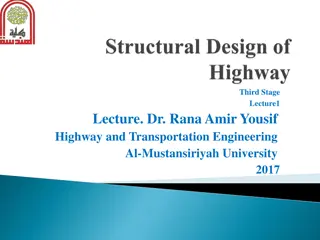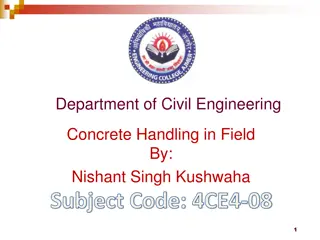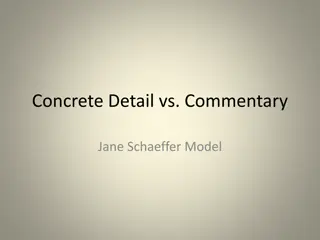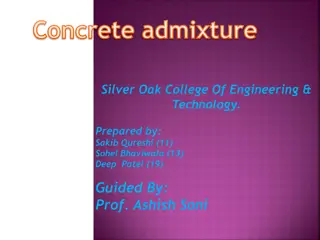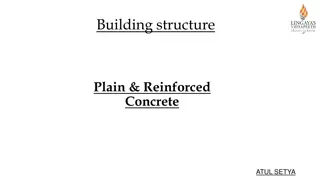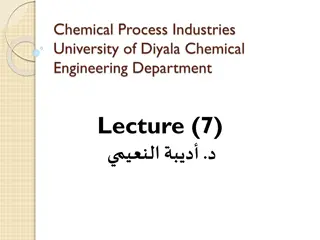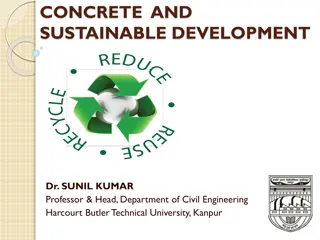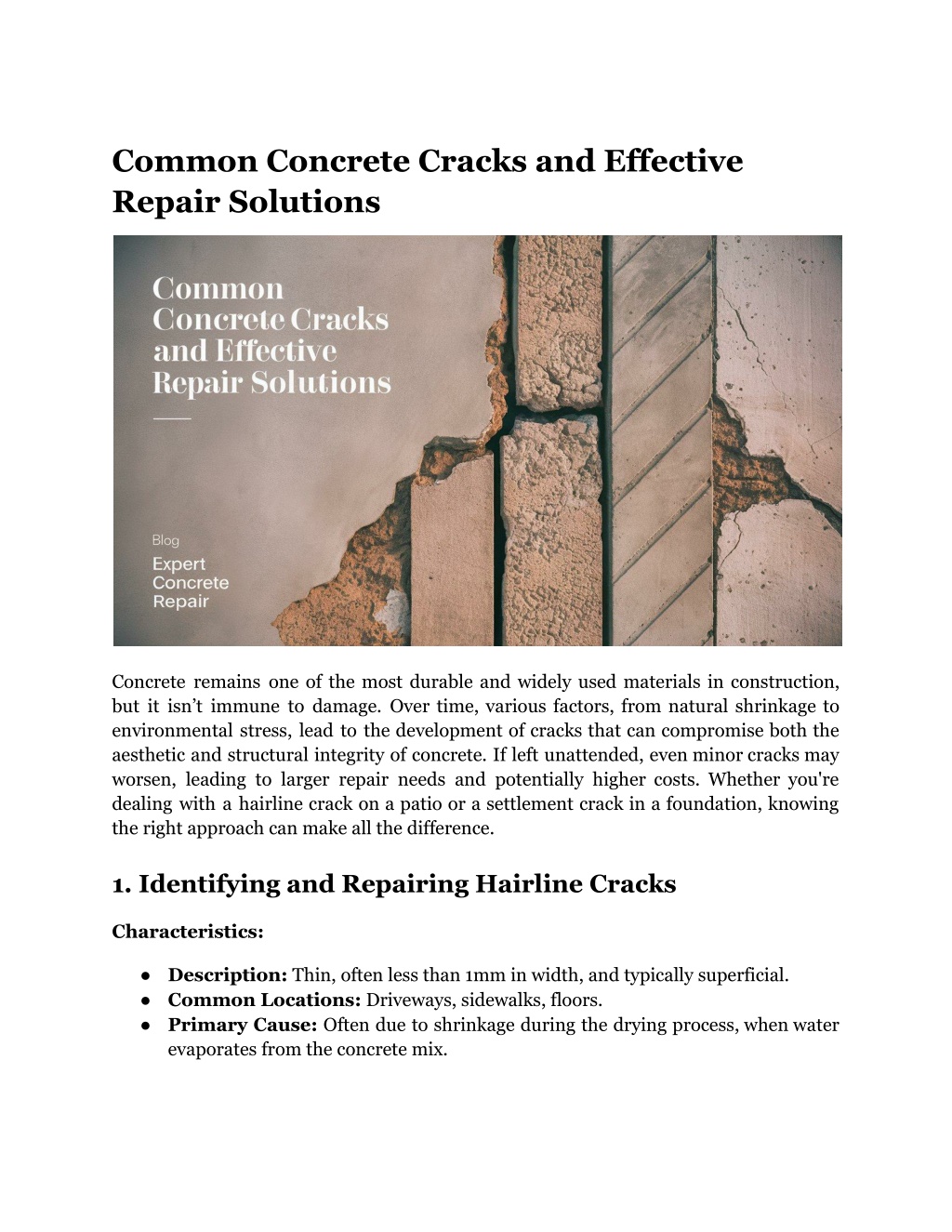
Common Concrete Cracks and Effective Repair Solutions
Learn about the most common concrete cracks and discover effective repair solutions to restore your surfaces. Simple tips for lasting results.
Download Presentation

Please find below an Image/Link to download the presentation.
The content on the website is provided AS IS for your information and personal use only. It may not be sold, licensed, or shared on other websites without obtaining consent from the author. Download presentation by click this link. If you encounter any issues during the download, it is possible that the publisher has removed the file from their server.
E N D
Presentation Transcript
Common Concrete Cracks and Effective Repair Solutions Concrete remains one of the most durable and widely used materials in construction, but it isn t immune to damage. Over time, various factors, from natural shrinkage to environmental stress, lead to the development of cracks that can compromise both the aesthetic and structural integrity of concrete. If left unattended, even minor cracks may worsen, leading to larger repair needs and potentially higher costs. Whether you're dealing with a hairline crack on a patio or a settlement crack in a foundation, knowing the right approach can make all the difference. 1. Identifying and Repairing Hairline Cracks Characteristics: Description: Thin, often less than 1mm in width, and typically superficial. Common Locations: Driveways, sidewalks, floors. Primary Cause: Often due to shrinkage during the drying process, when water evaporates from the concrete mix.
Repair Strategy: Hairline cracks may look insignificant, but they can still allow water and dirt to seep into the concrete, potentially expanding the cracks over time. Use Low-Viscosity Epoxy: A thin epoxy resin can seep into these fine cracks, creating a strong bond and sealing off moisture. Application Tips: Warm, dry conditions work best for epoxy application, allowing the material to penetrate deeply and cure fully. 2. Addressing Shrinkage Cracks in Slabs and Floors Characteristics: Description: Wider than hairline cracks, these cracks may appear in patterned shapes, typically wider at the surface and narrow at depth. Common Locations: Concrete slabs, floors, and other large poured surfaces. Primary Cause: Shrinkage as concrete cures and moisture evaporates, causing surface tension. Repair Strategy: To maintain the integrity of the slab or floor, it s essential to use flexible materials that can adapt to slight movement. Flexible Polyurethane Sealants: These sealants allow the concrete to expand and contract naturally, preventing further cracking. Preparation is Key: Clean the area thoroughly before applying sealant for a lasting fix. Crack Type Widt h Recommended Material Repair Application Tip Hairline <1mm Low-viscosity epoxy Apply conditions in warm, dry Shrinkage 1-3m m Flexible polyurethane Clean use thoroughly before 3. Handling Structural Shifts: Settlement Cracks Characteristics: Description: These cracks are generally deep and wide, often appearing as vertical or diagonal lines.
Common Locations: Foundations and load-bearing walls. Primary Cause: When the ground beneath the concrete settles or shifts, it creates voids or uneven support, leading to cracks. Repair Strategy: Settlement cracks indicate ground movement, so the ground may need stabilisation in addition to crack repair. Soil Injection or Grouting: Injecting grout into the soil can help stabilise the ground, filling any voids beneath the concrete. Epoxy or Polyurethane Foam Injection: Once the soil is stable, fill the crack with high-strength epoxy or expanding polyurethane foam, which seals the crack fully and reinforces the area. 4. Dealing with Expansion Cracks Due to Temperature Fluctuations Characteristics: Description: Cracks typically occur along joints or on surfaces exposed to extreme temperature changes, causing stress on the concrete. Common Locations: Exterior concrete such as patios, sidewalks, and driveways. Primary Cause: Temperature-related expansion and contraction of concrete, often exacerbated by a lack of expansion joints. Repair Strategy: Expansion cracks require a flexible approach to allow the concrete to adapt to temperature changes. Install Expansion Joints: If they weren t included in the original pour, adding expansion joints helps prevent further cracking. Flexible Filler: Use materials like silicone or polysulfide that expand and contract with temperature changes, reducing pressure on the concrete. 5. Reinforcing Weak Points: Diagonal Cracks in Corners Characteristics: Description: These diagonal cracks often appear in corners or around structural openings, such as windows and doors. Common Locations: Foundations or walls near openings.
Primary Cause: Uneven load distribution or structural shifts, especially around points that bear additional weight. Repair Strategy: Diagonal cracks near structural points need careful repair to avoid structural failure or widening over time. Epoxy Resin Injection: Inject epoxy resin into the crack to bond it thoroughly, adding stability. Load Redistribution: For severe cracks, consider reinforcing the area with steel brackets or additional concrete reinforcements to redistribute the weight evenly. 6. Managing Overload Cracks in Heavy-Use Areas Characteristics: Description: These cracks tend to be wide and often occur horizontally or vertically under heavy pressure. Common Locations: Concrete floors in garages, warehouses, or any area under heavy machinery or vehicular traffic. Primary Cause: Overloading the concrete beyond its designed weight capacity, causing it to buckle under pressure. Repair Strategy: For cracks caused by excessive weight, reinforcing the structure is often necessary. Rebar Installation: Reinforcing with steel rebar can add substantial strength to the cracked area. Polymer-Modified Concrete: After polymer-modified concrete to fortify the slab, ideal for areas requiring extra durability. installing reinforcement, apply Crack Type Cause Suggested Repair Notes for Application Settlement Ground movement Epoxy, soil grouting Stabilise soil first Expansion Temperature fluctuation Expansion joint filler Flexible movement to allow Overload Excessive weight Rebar, concrete polymer Reinforcement required
When to Hire Professionals for Extensive Cracks While minor cracks can often be managed with DIY solutions, extensive or structural cracks may require professional equipment, such as a concrete pumping services. A boom pump allows for precise, large-scale application of concrete or repair materials, particularly in hard-to-reach areas. Here are situations when hiring a professional is recommended: Large Surface Repairs: If you're dealing with extensive surface areas, like a large driveway or commercial flooring, a boom pump ensures even and efficient coverage. Vertical or High Wall Repairs: A concrete boom pump can deliver material to high or difficult-to-access areas, especially useful for wall repairs in tall buildings. Heavy-Load Structures: For industrial or commercial spaces where cracks occur due to continuous overload, a professional-grade fix with high-strength materials is crucial. Preventive Measures to Minimise Future Cracking While cracks are sometimes unavoidable, preventive strategies during and after the installation can reduce their likelihood and severity: Select a Quality Concrete Mix: Choosing a high-quality mix suited for the environment and intended use can enhance the durability of your concrete. Balance Moisture in the Mix: Proper water levels are essential during mixing and curing; too much or too little can make the concrete more prone to cracking. Add Expansion Joints: Expansion joints are crucial for allowing concrete to respond to temperature fluctuations without cracking. Respect Load Capacity: Ensure that concrete surfaces aren t overloaded beyond their design capacity, especially in industrial settings. Conclusion Concrete cracking is inevitable in many cases, but understanding the different types and their causes helps determine the most effective solutions. By identifying the crack type and choosing the correct repair method, you can preserve the appearance and durability of your concrete structures. For large or complex repairs, don t hesitate to consider professional options like a concrete boom pump hire, which allows for effective application in hard-to-reach or heavy-load areas.
Site Article: Common Concrete Cracks and Effective Repair Solutions

